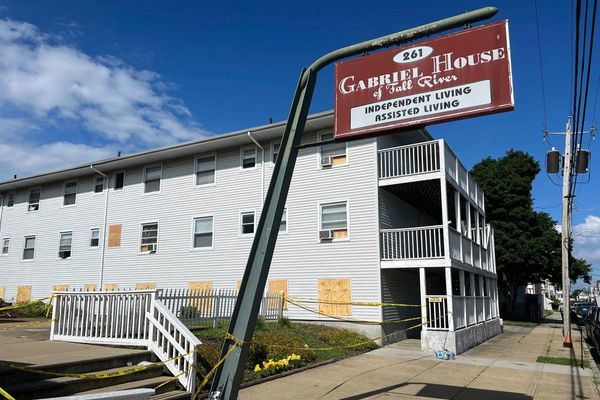
The Atlantic Ocean hid mysterious World War I-era railroad tracks — until now.
The discovery was made at a beach in Cape May, New Jersey, in the wake of a fierce coastal storm last week.
Liz Goldsmith was walking along the shores between Sunset and Higbee Beach on May 10 when the ocean — fueled by the storm, coastal erosion and the daily low tide — unearthed one of the area’s rarest finds.
The tracks, which date back to the early 20th century, were seen in 2014 for the first time in over 80 years. They have since been revealed by different weather events in subsequent years, including by several big storms in 2018.

Nicknamed “ghost tracks,” the tracks were used to support sand mining and World War I munitions testing, according to NJ.com. The Cape May Sand Company also used the rails from 1905 to 1936 to remove sand from the beach and turn it into glass or cement.
Local historian Ben Miller told NJ.com in 2017 that cement created from the sand that was carried along the tracks helped build the Panama Canal in the early 20th century.
“These are like hidden treasure — unearthed,” Miller said. “All of a sudden, they’re there. What used to be just the sandy beach that you walked down is like a portal to the past.”
Goldsmith’s 2022 find of the tracks was made possible by coastal storms that smacked the New Jersey coast last week. The storms dropped multiple inches of rain and dealt fierce wind gusts. They also accelerated the growing concerns about the area’s beach erosion.

Massive amounts of sand were wiped away from beaches throughout the area, including on Sunset and Higbee Beach. The erosion was most severe farther north in North Wildwood, particularly in the area near 7th Avenue and JFK Beach Drive, 6abc reported. The entire beach area and all of its replenishment sand was wiped away.
“This caused significant beach erosion for some beaches in South Jersey, including the erosion of sand dunes which in some cases turned into steep cliffs,” said Tom Kines, AccuWeather senior meteorologist. “The beach erosion impacted the shoreline southward into the Carolinas.”
“Unlike the East Coast storms we usually see in the winter, this storm pounded the shoreline for several days. A Nor’easter usually only causes problems for a day or two,” Kines said. “Since the wind was out of the same direction for multiple days, this caused the waves to progressively get larger and larger while impacting the same beach day after day.”
Produced in association with AccuWeather.







